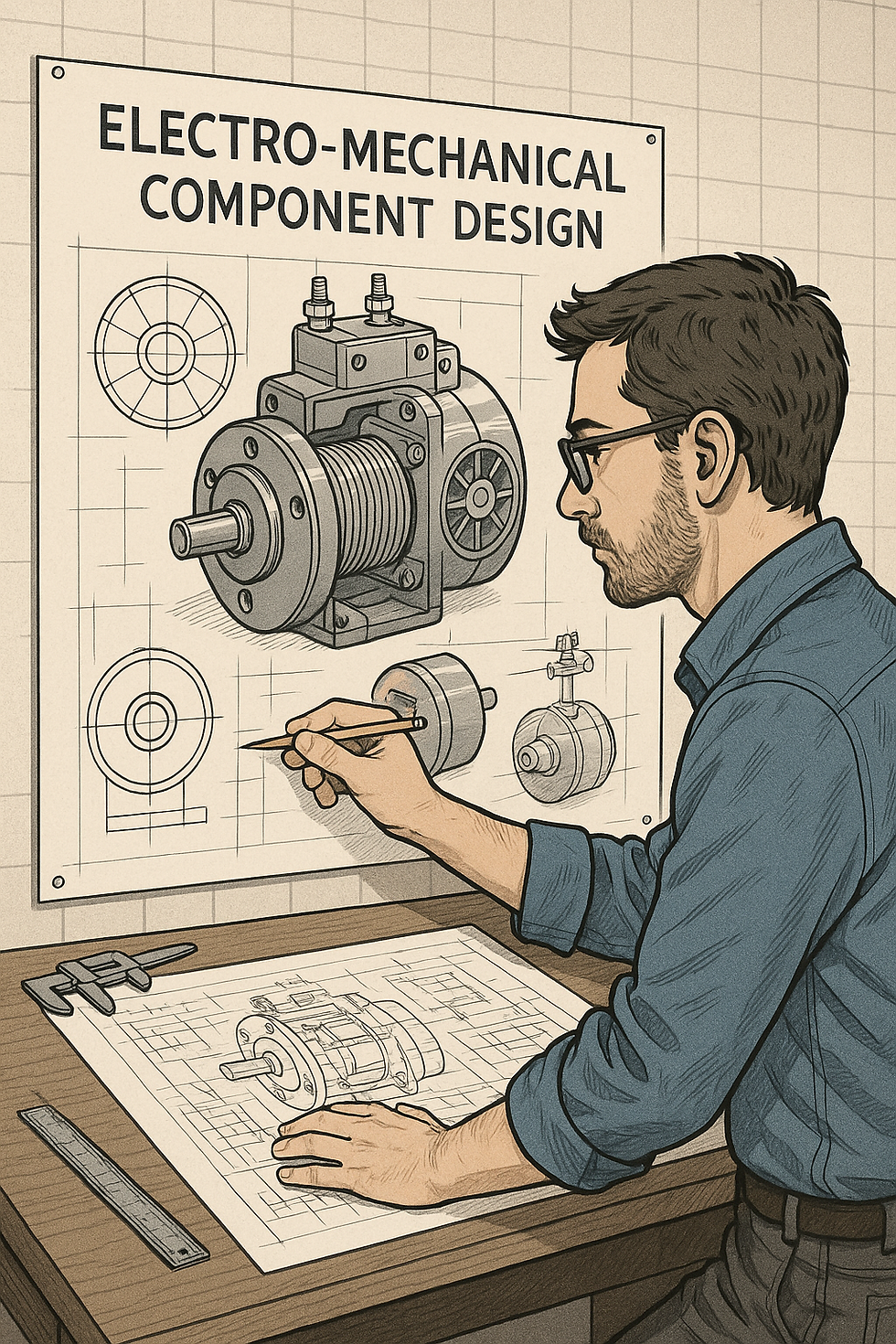From Concept to Prototype: The Process Behind Electromechanical Component Design
- Mefron Technologies
- Oct 8
- 3 min read

In today’s interconnected world, electronic products are becoming increasingly compact, efficient, and intelligent. At the core of these advancements lies electromechanical component design - a discipline that blends mechanical precision with electronic functionality.
Whether it’s an automotive control module, a consumer device, or an industrial automation system, the design of electromechanical components determines not only how a product performs but also how reliably it operates in the field.
This article walks through the key stages involved in transforming an idea into a functional prototype.
1. Concept Development and Requirement Analysis
The process begins with defining the product concept. At this stage, engineers and product managers collaborate to identify the purpose, functionality, and target environment of the component. Questions such as “What motion or control is required?”, “What space constraints exist?”, and “What power sources will be used?” guide this stage.
A detailed requirement specification document is created, which outlines electrical, mechanical, and environmental parameters such as torque, voltage, load capacity, and temperature range. Clear specifications prevent design iterations later in the process.
2. Feasibility Study and Design Planning
Before moving to the drawing board, a feasibility study assesses the technical and economic viability of the concept. Engineers evaluate available materials, cost constraints, and manufacturing processes like injection moulding, CNC machining, or PCB Assembly.
Planning also includes timeline estimation, resource allocation, and design risk assessment. This ensures that both mechanical design and electronic integration proceed in sync.
3. Mechanical and Electrical Design Integration
Once the project scope is defined, the mechanical and electrical design phases run concurrently.
Mechanical Design involves creating 3D models of enclosures, actuators, and structural components using CAD tools. Designers consider factors like thermal management, vibration, and durability.
Electrical Design focuses on the circuitry, sensors, PCB layout, and connectivity required for the component’s functionality.
A key challenge here is achieving synergy between both domains, ensuring that the electronic components fit mechanically while maintaining safety and performance standards. Cross-functional communication between mechanical and PCB engineers is critical at this point.
4. Simulation and Design Validation
Before any physical prototype is built, engineers use simulation tools to test design parameters virtually. This helps predict how the component will behave under stress, vibration, or electrical load.
Thermal analysis, tolerance checks, and signal integrity tests ensure the design meets performance goals. Virtual validation at this stage helps reduce material waste and shortens the overall development timeline.
5. Prototype Development
Once the design is validated, a functional prototype is developed. This is a crucial stage where the digital model becomes a tangible product.
Depending on the complexity, the prototype may be made using 3D printing, machined components, and assembled PCBs. In the case of electromechanical assemblies, both mechanical housing and electronic boards are integrated to create a working sample.
The prototype is used for fit, form, and function testing, allowing engineers to assess real-world performance and identify potential improvements.
6. Testing and Refinement
Prototypes undergo rigorous testing and validation including mechanical endurance, electrical reliability, and environmental resistance tests. In industries such as automotive or industrial automation, additional reliability tests like thermal cycling and vibration testing are performed.
Any deviations found during testing are corrected through design refinement. This iterative feedback loop continues until the prototype meets all functional and regulatory standards.
7. Preparing for Production
After final approval, engineers prepare the design documentation and manufacturing data, including PCB Gerber files, assembly drawings, and bill of materials (BOM).
At this point, collaboration with an experienced Electronic Manufacturing Services (EMS) provider becomes essential. Companies offering comprehensive Box Build Assembly Solutions and PCB Assembly Services ensure that the design can be efficiently transitioned to large-scale production without compromising quality or consistency.
Conclusion
Electromechanical component design is an interdisciplinary process that demands precision, collaboration, and technological insight. From concept to prototype, each step ensures that the final product not only functions as intended but is also manufacturable at scale.
Partnering with the right EMS company simplifies this journey — enabling faster prototyping, optimized assembly, and consistent quality control across every stage of production. For businesses developing innovative electronic or electromechanical products, such partnerships often determine how quickly a concept reaches the market — and how well it performs once it does.



Comments